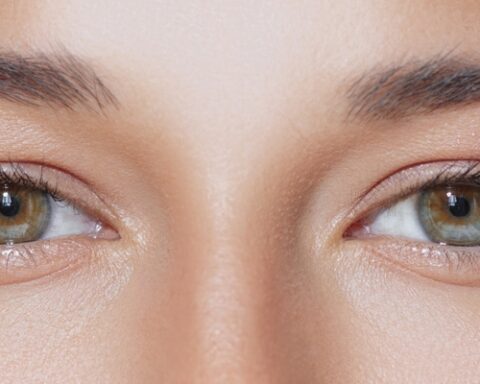Are your reading glasses multiplying faster than socks in the dryer? Around age 40, many people start to squint at menus, juggle multiple pairs of glasses, or wonder if that LASIK ad they scrolled past might actually be speaking directly to their aging eyeballs. But is LASIK really the midlife vision reset it claims to be—or just a shiny promise with fine print?
The Deal with Your Eyes at 40
First, a quick reality check: even if you’ve had perfect vision since childhood, your eyes are changing. The culprit is presbyopia, a fancy term for “your eyes’ focusing muscles are getting stiff.” You’re not broken—it’s just biology.
By 40, you’ll probably notice some common issues.
- Trouble focusing on close-up objects
- Eyestrain after screen time
- Needing brighter light to read
- Gradual dependence on reading glasses
This isn’t the same thing as being nearsighted or farsighted. And that matters—because LASIK isn’t a magic wand for every vision hiccup.
What LASIK Actually Does
LASIK (Laser-Assisted In Situ Keratomileusis) reshapes the cornea to correct refractive errors.
- Myopia (nearsightedness)
- Hyperopia (farsightedness)
- Astigmatism (distorted vision)
It doesn’t “cure” vision. It just changes how light hits your retina. For most, it drastically reduces or eliminates the need for distance glasses or contacts. But for folks in their 40s, the big question is whether LASIK can also fix presbyopia.
Short answer? Sort of.
The Monovision Workaround
One common approach for people over 40 is monovision LASIK. That’s when one eye is corrected for distance and the other is tuned for close-up. It sounds wild, but many people adapt well and find it eliminates the need for reading glasses.
Here’s the trade-off.
- Depth perception might take a hit
- Night vision may feel off
- Not everyone’s brain can adjust to two focal lengths
Doctors often recommend trying monovision contact lenses first to test drive the experience. If your brain gives it the green light, monovision LASIK could be your ticket to a glasses-free life—at least for a while.
LASIK Myths That Need Squinting At
Let’s clear up a few misconceptions that pop up like pop-up ads.
- “It’s permanent.”
Sort of. The reshaping is permanent, but your eyes will still age. You might still need readers down the road. - “Everyone’s a candidate.”
Nope. LASIK isn’t ideal for people with thin corneas, dry eyes, unstable vision prescriptions, or certain health conditions. - “You’ll never wear glasses again.”
Maybe for a while. But presbyopia doesn’t care about your LASIK receipt. - “It’s risky.”
Complications are rare. According to the American Refractive Surgery Council, more than 96% of patients are satisfied with the outcome. But dry eyes, glare, or halos can happen—especially at night.
The Cost Breakdown
LASIK isn’t cheap, and it’s usually not covered by insurance.
- Standard LASIK costs around $2,000–$3,000 per eye
- Custom or bladeless LASIK may run higher
Some clinics offer financing, but beware the bait-and-switch $250-per-eye ads—they rarely apply to anyone with actual vision issues.
You’ll also need a pre-surgery exam, post-op visits, and possibly enhancements later on. It’s not just a one-day thing, even if it only takes 15 minutes.
Alternatives Worth Considering
If LASIK feels too intense—or your ophthalmologist gives you a hard no—there are other options.
- PRK (Photorefractive Keratectomy): Older technique, good for thin corneas, longer recovery
- SMILE (Small Incision Lenticule Extraction): Less invasive, fewer dry-eye complaints, not for everyone
- Refractive Lens Exchange (RLE): Swaps your natural lens for an artificial one—popular post-45
- Multifocal Contacts: Less commitment, but can be tricky to get used to
- Just owning the readers: Not cool, maybe, but definitely cheap
So, Is LASIK at 40 Worth It?
That depends on how you define “worth it.”
You Might Love It If
- You’re already nearsighted and tired of glasses
- You’re a good candidate medically
- You’re okay with still needing readers sometimes
- You want the convenience more than perfection
You Might Pass If
- You’re primarily struggling with close-up vision only
- You have eye conditions that complicate healing
- You’re on the fence about permanent eye changes
- You want guaranteed results (which don’t exist)
The reality is that LASIK can be a huge quality-of-life upgrade—but it isn’t a Benjamin Button cure for your eyeballs. Your expectations matter as much as your corneal thickness.
One Last Look in the Mirror
Choosing LASIK at 40 is a bit like deciding to get a tattoo after your first gray hair: bold, liberating, and best done with a clear understanding of the consequences. It’s not the fountain of youth, but it is a legit option if you want to spend less time peering over the tops of readers like a skeptical librarian.
Laser precision doesn’t replace realistic thinking—but for the right eyes, at the right time, it can feel pretty close.






